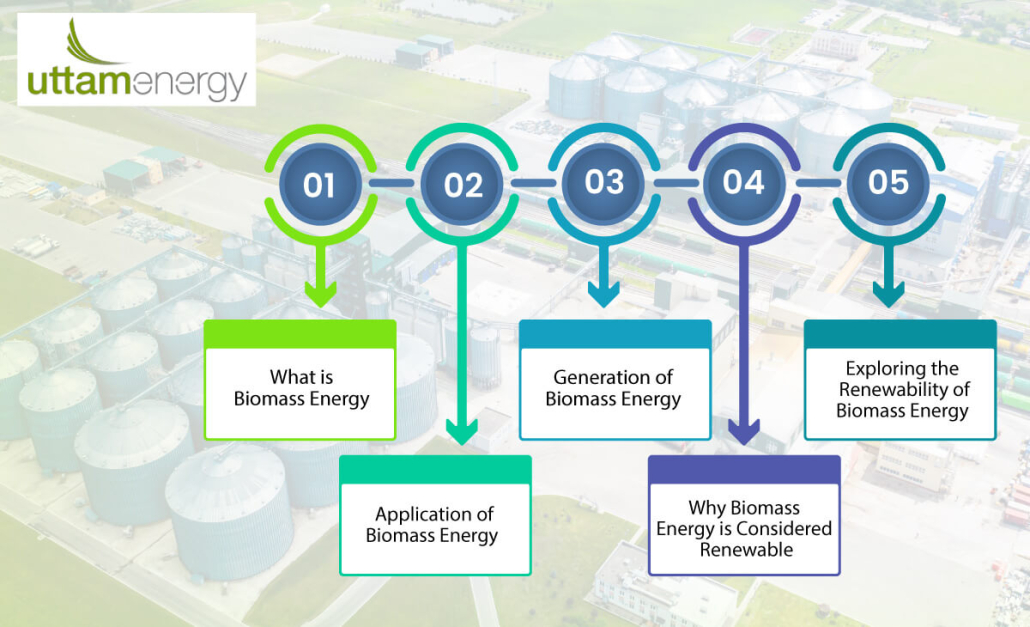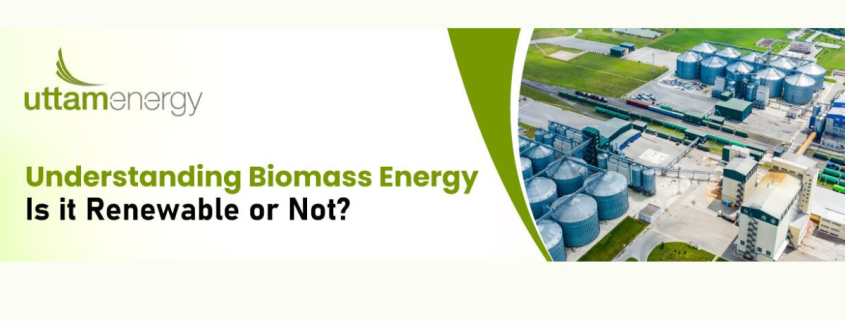Understanding Biomass Energy: Is it Renewable or Not?
In our pursuit of a sustainable energy landscape, biomass energy emerges as a captivating alternative, holding the promise of a greener future. Derived from organic materials like plants, crops, and waste, it has garnered attention for its potential to reduce greenhouse gas emissions and foster sustainable development. To understand is the biomass renewable, we delve into its essence. It is the ethereal manifestation of energy trapped within living organisms, liberated through alchemical processes. This energy takes the form of heat, electricity, or biofuels.
The question arises: is biomass energy truly a wellspring of eternal renewal or confined by finite limitations? We explore its mystical qualities and intricate dance with the environment to find the answer.
Biomass energy is celebrated for its regenerative nature, drawing strength from organic materials that possess the ability to naturally replenish themselves. Sustainable cultivation ensures a continuous supply for energy generation. Responsible stewardship becomes the key to its long-term viability.
Yet, shadows cast doubt on biomass energy’s renewability. Unsustainable practices can bring deforestation, soil degradation, and loss of biodiversity. Some forms, like fossil fuels, emit greenhouse gases, fueling climate change. These realities challenge the unbroken renewal of biomass energy.
Nevertheless, optimism prevails. Biomass energy emerges as a renewable resource, blending the harmonies of nature and human ingenuity. It tames greenhouse gas emissions, bridging the gap between energy needs and our fragile planet. Utilizing biomass waste streams enhances efficiency and sustainability, revealing the potential in every forgotten fragment.
Understanding Biomass Energy: Is it Renewable or Not?

What is Biomass Energy?
It is the energy that stems from capturing and utilizing the organic substances found within living organisms or those that have recently perished. Numerous techniques can be used to acquire this energy, which can then be converted into heat, electricity, or biofuels.
Wood, agricultural crops, crop residues, energy crops specifically cultivated for fuel, algae, and organic waste are just a few examples of the diverse sources that make up biomass materials. These various organic materials are used as fuel for biomass energy systems, which provides a renewable and environmentally friendly substitute for conventional energy sources.
Utilizing biomass allows us to access a rich and plentiful resource that has the potential to produce clean and eco-friendly energy solutions.
Exploring the Renewability of Biomass Energy
A Biomass Energy’s Renewable Nature- Biomass energy is widely recognized as a renewable source due to its reliance on organic materials that possess the innate capacity to replenish themselves naturally. Sustainable plant and crop cultivation and harvesting can guarantee a steady supply of biomass for energy production, establishing it as a workable long-term alternative, subject to prudent resource management.
Additionally, during its growth phase, photosynthesis in biomass shows a remarkable capacity to sequester carbon dioxide (CO2). A carbon-neutral cycle is established when biomass is used for energy generation because the CO2 released during combustion is balanced by the CO2 absorbed during its growth.
This distinguishing feature helps to maintain the notion of biomass energy as a renewable resource with no net CO2 emissions. panorama of energy. A solid case can be made for biomass energy as a sustainable and environmentally friendly alternative due to its capacity to store carbon during growth and its capacity to recover. By exploiting biomass’s power, we can fight climate change and advance a more sustainable energy system, helping to create a future that is more environmentally friendly.
Generation of Biomass Energy
Biomass energy can be harnessed through diverse techniques. Combustion stands as the predominant method, wherein biomass materials are combusted to generate heat. This heat can be employed for heating purposes in buildings or channeled to produce steam that drives turbines, ultimately generating electricity.
An alternative method is anaerobic digestion, in which organic matter decomposes in the absence of oxygen to produce biogas. Both power and heat can be produced using this biogas. Additionally, biomass has the ability to be transformed into liquid biofuels like ethanol and biodiesel through processes like fermentation and transesterification.
Application of Biomass energy
Biomass energy demonstrates its versatility across multiple sectors. In the residential realm, it serves as a valuable source for heating homes and cooking. Industries benefit from biomass energy by utilizing it for heat and steam in manufacturing operations, or as a raw material in the creation of bio-based goods.
The transportation sector embraces the use of biofuels derived from biomass, providing a greener alternative to traditional fossil fuels for vehicles. Furthermore, biomass energy plays a pivotal role in electricity production. Whether power is produced directly through combustion or indirectly through the product of biogas from biomass, it’s a reliable system. With such a wide range of applications, biomass energy shows that it can support a green energy system, reducing reliance on fossil fuels and promoting a cleaner future for all.
Why Biomass Energy is Considered Renewable
Biomass energy stands as a clear contender in the realm of renewable resources for several compelling reasons. The primary rationale lies in the replenishable nature of the organic materials employed in its production. Through responsible cultivation and management practices, these materials can be regrown or replenished, ensuring a continuous supply for energy generation.
Furthermore, biomass energy systems hold the promise of mitigating greenhouse gas emissions, surpassing the environmental impact of fossil fuel-based alternatives.
By harnessing biomass waste streams, such as agricultural residues and forestry by-products, this form of energy harnesses the power of sustainable and efficient resource utilization, minimizing waste and maximizing output.
With its renewable attributes, biomass energy shines as a beacon of hope, offering a viable and eco-conscious solution to meet our energy needs while preserving the delicate balance of our planet’s ecosystem.
Conclusion
If we use responsible management techniques, biomass energy has a lot of potential as a sustainable energy source. It’s a good choice for producing sustainable energy because it depends on organic resources that have been regrown. It’s important to put in place suitable legislation and monitoring processes to help the overexploitation of biomass resources, which would cause habitat loss and other mischievous environmental goods.
By sustainably using biomass energy, we can combat climate change, reduce our reliance on finite fossil fuels, and pave the way for a more sustainable and ecologically friendly energy future. It’s over to us all to strike a balance between utilizing biomass energy’s benefits and guarding the vulnerable ecosystems that support us. We can pave the way for a better and more sustainable future for future generations via wise resource management and thoughtful decision- making.



